Resection With End-to-end Anastomosis for Aortic Coarctation treatment
Treatment prices are regulated by national law of the corresponding countries, but can also include additional hospital coefficients. In order to receive the individual cost calculation, please send us the request and medical records.
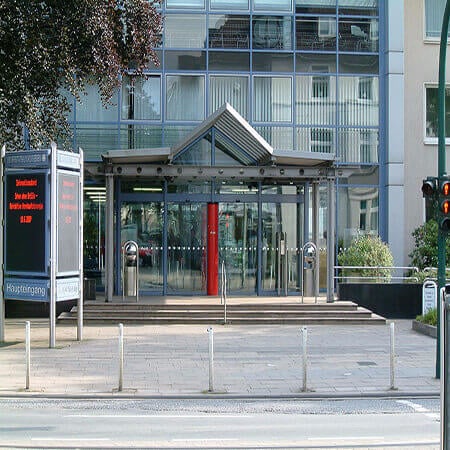
Department of Cardiothoracic Surgery
According to the Focus magazine, the Department of Cardiothoracic Surgery ranks among the top German medical facilities specializing in the surgical treatment of diseases of the cardiovascular system and lung cancer! The department offers the full range of surgical services for the treatment of diseases of the cardiovascular system, respiratory tract, including heart and lung transplantation, artificial heart implantation. The therapeutic options include aortic surgery, coronary artery bypass grafting, transplantation surgery, surgical treatment of heart rhythm disorders (arrhythmias), minimally invasive surgery, surgical treatment of the heart valves, including reconstructive interventions. All operations are performed using state-of-the-art technology and in accordance with the current recommendations of professional societies.
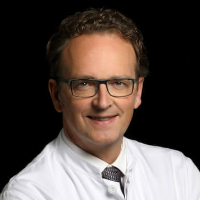

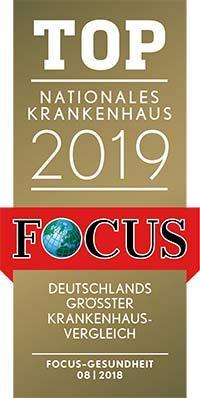
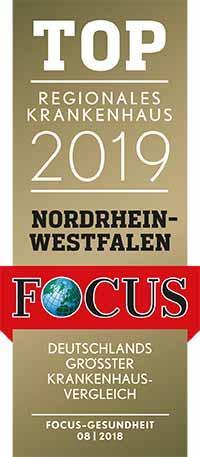

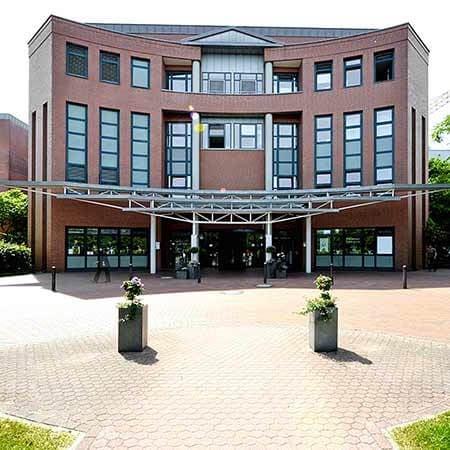
Department of Cardiac Surgery
The Department of Cardiac Surgery provides a full range of surgical treatment in its area of specialization. Special emphasis is placed on heart valve repair and replacement surgery, coronary artery bypass grafting, thoracic aortic surgery, adult congenital and acquired heart disease surgery, pacemaker and defibrillator implantation, and artificial heart implantation for severe heart failure. Many heart operations are performed using minimally invasive techniques, which has a positive effect on the healing of the surgical wound. Minimally invasive cardiac procedures also reduce surgical risks and contribute to a rapid recovery of the patient in the postoperative period. Surgical treatment of cardiac pathologies is performed in advanced operating rooms equipped with the latest technology. The cardiac surgeons of the department successfully perform routine and complex surgical procedures, saving the lives of thousands of patients. The specialists work in accordance with current clinical protocols and follow the recommendations of the German Society for Thoracic and Cardiovascular Surgery (DGTHG).


Department of Cardiothoracic Surgery and Vascular Surgery
The Department of Cardiothoracic Surgery and Vascular Surgery provides effective surgical treatment for diseases of the heart, respiratory system, and blood vessels. The team of cardiac surgeons operates on patients with heart valve pathologies, coronary heart disease, heart failure, and heart rhythm disturbances. In the field of thoracic surgery, the key focus is on the surgical removal of lung tumors and lung metastases. The specialists in this area also perform surgery to repair chest wall deformities. In the field of vascular surgery, interventions for abdominal and thoracic aortic aneurysms are most often performed here. The department's vascular surgeons are also exceptionally competent in the treatment of peripheral occlusive arterial disease. A great advantage for the department's patients is that almost all surgical interventions are performed using minimally invasive techniques, so there is no need for a long postoperative recovery. The department's operating rooms are equipped with state-of-the-art technology. This allows for effective and safe treatment. The priority is always personalized medical care for patients.
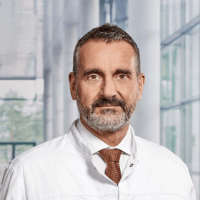
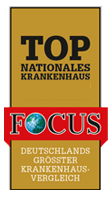



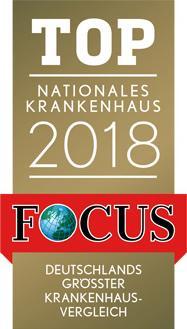
Aortic coarctation is one of the most common heart defects. The condition is usually severe, and the repair of normal hemodynamics by the surgical method is already required in the first months and sometimes in the first weeks of a child's life. One of the main ways to treat aortic coarctation is resection with end-to-end anastomosis. Surgeons abroad perform these operations effectively and safely on patients of any age, including newborns. You are welcome to use the Booking Health service to visit one of the world's best hospitals for your surgical treatment. Our website offers the leading Cardiac Surgery Centers that admit foreign patients and presents the current cost of treatment.
Content
- What is aortic coarctation?
- What is end-to-end anastomosis in aortic coarctation?
- Who may be a candidate for end-to-end anastomosis for aortic coarctation repair?
- How is surgery for aortic coarctation performed?
- Why to undergo your treatment abroad for aortic coarctation?
What is aortic coarctation?
Aortic coarctation is a narrowing of a blood vessel due to excess tissue growth in its lumen. The narrowing is usually localized immediately after the place where the subclavian artery is. However, it may occasionally be found in other places, up to the abdominal aorta.
This defect is potentially life-threatening. Some patients require surgery shortly after their birth. In other cases, the defect may cause moderate hemodynamic disturbances but lead to the development of severe complications after the age of 20-30 years, such as ventricular dysfunction, severe arterial hypertension, and coronary heart disease.
Coarctation of the aorta in newborns causes a weak pulse in the legs. Children with coarctation of the aorta are pale, poorly fed, and lag behind in their physical development. If hemodynamic disturbances are non-critical, the first symptom of coarctation, which is detected in adolescence and young adulthood, is uncontrolled arterial hypertension. Moreover, it is limited to the upper half of the body. The legs do not receive enough blood and oxygen, so they look thin relative to other parts of the body.
What is end-to-end anastomosis in aortic coarctation?
End-to-end anastomosis is one of the most commonly used methods for aortic coarctation repair in modern cardiac surgery. It is the technique of choice for children with coarctation of the aorta, including neonates. This method of surgical repair results in a low risk of recurrent aortic coarctation.
The essence of the operation is that doctors remove 2-3 cm of the aorta in the coarctation zone. The ends of the blood vessels are then sutured together. As a result, the normal diameter of the aorta is repaired and hemodynamics are restored. Since surgeons perform the resection of the pathological tissue, the risk of recurrent narrowing remains low.
Resection with end-to-end anastomosis is historically the first treatment for coarctation of the aorta. It was first used in Sweden in 1944. In 1953, the first successful operation was performed on a newborn child.
In 1977, the technique of extended end-to-end anastomosis appeared and began to be used to repair the aorta with hypoplasia (underdevelopment) of its arch. Doctors may also optionally perform aortic arch reconstruction if the chances of it developing on its own after surgery are assessed as low. An immediate repair of the arch reduces the risk of recurrent aortic coarctation.
Who may be a candidate for end-to-end anastomosis for aortic coarctation repair?
Coarctation resection with an anastomosis can be used at any age. But in practice, most often it is performed on newborns and children under the age of 5 years. In older children and adults, end-to-end anastomosis is used much less often, while other operations to repair the normal lumen of the aorta are preferred.
Young children have an elastic aorta. It is possible to remove 2-3 cm of tissue in the area of coarctation, bring the ends together, and suture them together without using a vascular prosthesis. Some authors believe that even the divergence of the ends up to 4-5 cm can be eliminated without any prosthetic repair by mobilizing the aortic arch and subclavian artery.
At the same time, the aorta thickens in adult patients, often showing signs of calcification (deposits of calcium salts). The aorta does not stretch well, and the sutures erupt even with slight tension.
The issue with surgical treatment of coarctation in children with end-to-end anastomosis remains insufficient anastomosis growth. Scars remain in the area of suturing the ends of the aorta. At this point, the diameter of the aorta increases as the child grows, but to a lesser extent than the diameter of the rest of the aorta. Therefore, in the future, a relative narrowing may occur in this area.
How is surgery for aortic coarctation performed?
The operation for coarctation is performed through an open surgical approach. Doctors make an incision in the fourth intercostal space on the left (a left-sided thoracotomy). The surgical procedure requires the use of a heart-lung machine and clamping of the aorta above and below the incision site.
Doctors then resect the aorta in two places. The area in which the narrowing occurred will be removed. The ends of the aorta are brought together and sutured. Additionally, other manipulations may be required, for example, the repair of a hypoplastic aortic arch as well as interventions for concomitant heart defects.
Why to undergo your treatment abroad for aortic coarctation?
Cardiac surgery is complex and unsafe. To cure aortic coarctation at one time without any repeated operations or complications, it is worth carefully selecting a hospital. If you live in a country with a low level of medicine, you can have your treatment abroad. There are a few reasons for you to seek medical attention at one of the world's best hospitals. These are the following:
- state-of-the-art equipment and highly qualified cardiac surgeons;
- the use of modern modifications of surgical procedures;
- successful treatment of coarctation of the aorta at any age;
- a low risk of repeated development of aortic coarctation;
- a low risk of complications;
- successful surgical treatment of even premature babies weighing less than 2 kg;
- effective treatment in complex cases where coarctation of the aorta is combined with aortic arch hypoplasia or left ventricular hypoplasia;
- the possibility of simultaneous elimination of several heart defects at once in children weighing more than 1.5 kg;
- high-quality postoperative care and full rehabilitation.
On the Booking Health website, you can find out the cost of treatment abroad and select a program at the best price. The website presents the best foreign Cardiac Surgery Centers where you can undergo your diagnostics, treatment, and rehabilitation. When you make an appointment at a hospital through Booking Health, the cost of treatment will be lower for you than when you contact the hospital directly. The price reduction is due to the absence of additional taxes for foreign patients. The initial cost of treatment will not increase after the start of the program, even if additional medical procedures are required, because you will receive insurance that will cover unforeseen expenses.
The Booking Health specialists will take care of all the arrangements for your treatment abroad. We will contact the hospital administration and schedule an appointment for your preferred dates. We will also translate your medical documents and book a hotel room and plane tickets for you. After the resection of the coarctation of the aorta and your recovery, we will take care of your return transfer.
Authors:
The article was edited by medical experts, board-certified doctors Dr. Nadezhda Ivanisova and Dr. Vadim Zhiliuk. For the treatment of the conditions referred to in the article, you must consult a doctor; the information in the article is not intended for self-medication!
Sources:
European Society of Cardiology

